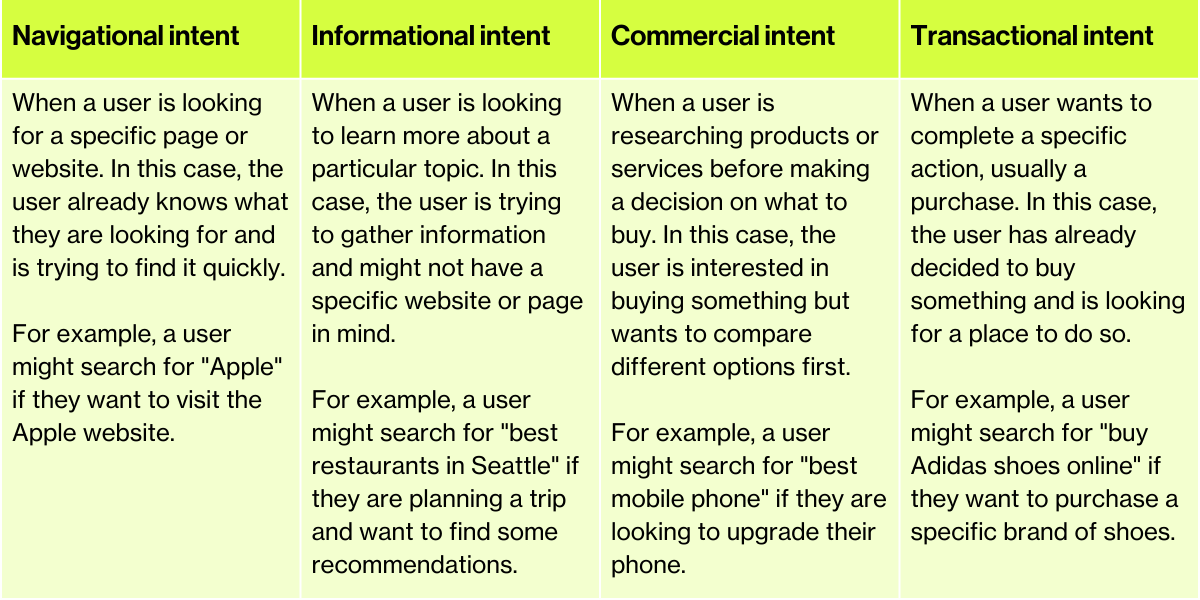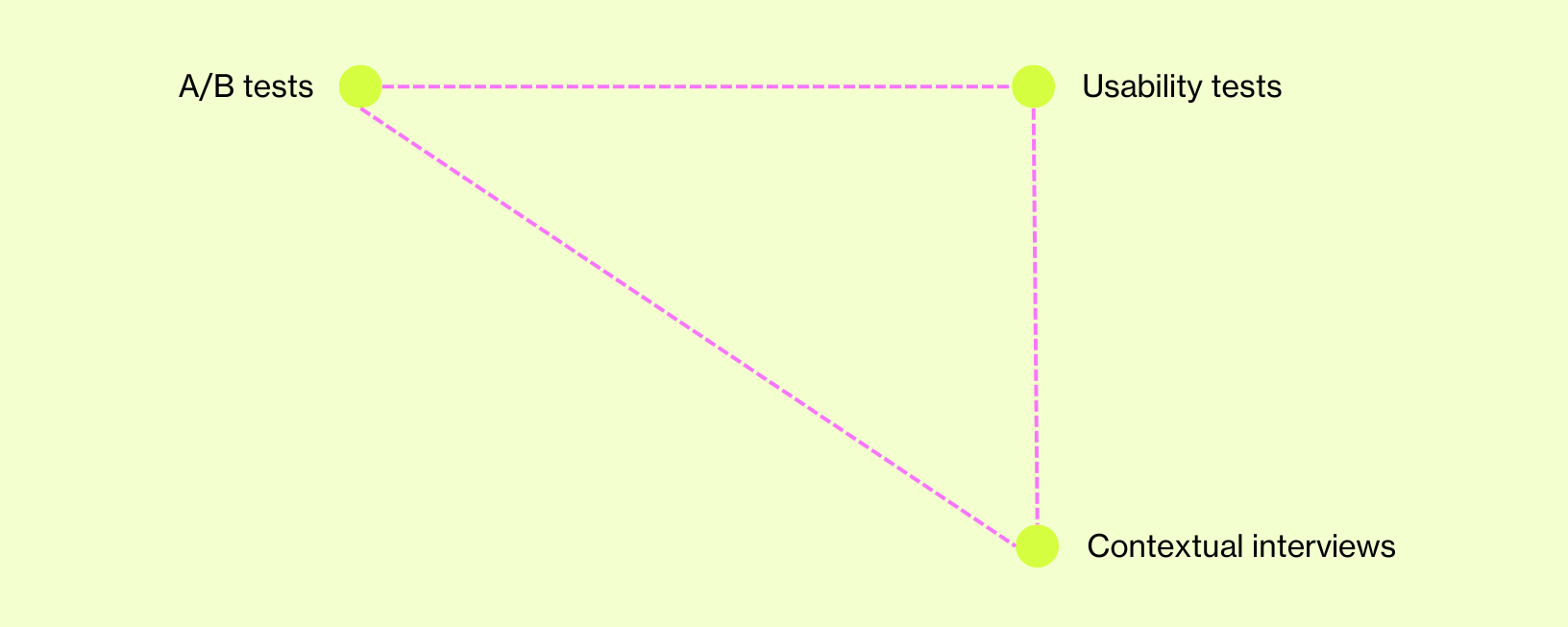
SEO and CRO: A symbiotic partnership for success
Search engine optimisation (SEO) and conversion rate optimisation (CRO) are two of the most powerful tools in a marketer’s arsenal.
Search engine optimisation is about understanding how search engines index and rank content. Using this understanding, the aim of SEO is to maximise the visibility of websites or other digital assets in search engines.
Conversion rate optimisation is the process of testing two or more versions of a webpage against each other to determine which one performs better. This involves changing elements such as design, layout, copy, and images to see which version results in more conversions. This process helps businesses to make data-driven decisions about website design and user experience.
At a high level, SEO is one of the ways to get attention and drive users to your page, and CRO happens once you have someone's attention and want to remove their barriers and increase their motivation to take action.
As enterprises continue to expand their online presence they must stay ahead of the competition. This is where CRO, SEO, and UX research come into play. These practices work hand in hand to improve the online presence of a company, leading to increased traffic, conversions and, ultimately, revenue.

SEO and user intent
In SEO, efforts are focused on optimising search results to reflect user intent. User intent refers to the reason behind a search query and it can be classified into four categories: navigational, informational, commercial, and transactional.
Often, the key when approaching intent for keywords is to understand where a brand wants to be positioned, and how search engines approach presenting the “right” result for a term. For example, do you want to strategically focus on high-volume of-the-funnel terms for the purpose of brand awareness, or on lower-volume bottom-of-the-funnel terms to focus directly on conversions? We can optimise our web pages to provide the information that users are looking for, which can increase click-through rates and ultimately drive more conversions.

Mixed methods experimentation: CRO and UX research
Mixed methods is the intricate process in which different methodologies are combined to generate different types of insights. Some of these techniques are quantitative in nature, like CRO, and some are qualitative such as certain user experience research (UX research) methodologies.

Utilising mixed methods helps teams keep a constant pulse on the visitors of their site, and help with:
Understanding users and identifying hypotheses. UX Research helps us understand what’s most important, or what causes the biggest friction for prospects and customers. This allows us to prioritise which are likely to be the most impactful testing hypotheses.
Avoiding stagnation through constant innovation. By utilising the synergies created by UX Research and A/B testing, teams can continually be ideating, testing, and iterating, supporting the business’ growth and keeping ahead of the curve.
CRO and SEO
By conducting CRO and testing different versions of a page, we can identify the elements that resonate with users and optimise our pages accordingly.
There exists a common misconception that CRO is bad for SEO. While there are several high-level risks that we discuss in a later section, there are a multitude of reasons that combining CRO and SEO is not only a winning strategy, but can drive bottom-line revenue at your organisation. When CRO and SEO are combined, they can result in significant benefits for enterprises.
Improved user experience
CRO and SEO can both improve the user experience of a website. By testing different versions of a webpage, businesses can identify which design elements, layout, or copy works best for an intended audience. Optimising a website for search intent ensures that users find what they are looking for when they search for relevant keywords, resulting in a positive user experience. With a positive user experience users stay on websites longer, and don't bounce back to Google rankings and send Google negative signals that your website didn't solve their needs.
Increased conversion rates
CRO leads to increased conversion rates by optimising a website's design and user experience. Additionally, SEO ensures the website ranks for the relevant keywords that users search for, leading to more qualified traffic. Together, these practices can increase conversion rates and ultimately revenue for businesses. Similarly, with increased conversion rates these are signals to search engines that users are finding what they need and this site should rank higher.
Improved search engine rankings
Optimising a website for search intent can lead to improved search engine rankings. By ensuring that a website's content aligns with user intent, search engines will recognise the website as an authoritative source and rank it higher in the SERPs (search engine results page).
In a similar way, the improvements to user experience, content layout, and design informed by CRO data can help to improve content that is already properly optimised for relevant keywords in organic search. CRO input can therefore often be valuable in further improving the organic ranking potential of content.
Cost-effective
CRO and SEO are both cost-effective practices that can deliver a significant return on investment. By identifying the design elements that work best for their audience, businesses can improve their website's user experience without investing in expensive redesigns. Additionally, SEO ensures that the website ranks for the relevant keywords, resulting in more qualified traffic without the need for expensive advertising campaigns.
CRO and SEO are essential practices that enterprises should integrate into their digital marketing strategy. Combining CRO and SEO can be a powerful strategy for increasing sales. By understanding user intent and testing different versions of our pages, we can optimise to provide the information that users are looking for and encourage them to take action.
Concerns with SEO and CRO — what do we need to be aware of?
CRO and SEO work best together. However, there are some nuances and potential pitfalls to look out for, so we’ve outlined some of the most relevant and common considerations when applying both.
Potential unintended consequences
Given that both SEO and CRO are based on making alterations to the content of a website — whether from a design standpoint, a content standpoint, or even both — without proper communication between the stakeholders responsible for these two disciplines, you run the risk of negatively impacting the performance of each one.
Say, for example, the CRO team substantially changes or even removes the content of a page as part of their optimisation efforts. While their data showed that this may have been the right decision in terms of the conversion rate of the page, what they didn’t consider is that this same content had been properly structured and optimised for relevant organic keywords. As a result, removing this content leads to a substantial reduction in organic traffic to the page due to lost visibility in Google’s SERPs.
Of course, this example works in reverse too. For example, if the SEO team adds content to a page or amends its structure in order to better rank for relevant keywords, they could severely impact the conversion rate of that same page. Say that these changes added a substantial amount of content to a URL that converted its users at a high rate precisely because it was short and to the point: the organic traffic to that same URL may well increase, but it may also lead to a drastic reduction in conversions.
In order to avoid the potential for unintended consequences, SEO and CRO need to work together, share data, and align on their approaches.
Googlebot’s limitations and the risks of cloaking
One of the core aspects of a harmonious relationship between SEO and CRO is to make use of A/B testing.
However, there are some risks teams should be aware of in order to apply CRO and SEO correctly. Collaboration between SEO and CRO can make or break the efficacy of both.
The other major consideration from an SEO perspective is what’s called cloaking. This term refers to instances where Google is served different content than an actual user, with the former often being served the “SEO ideal” version of a page, whereas a user is served something substantially different — with an emphasis on substantially.
If Google understands this is happening, it will be much less inclined to return that URL in favourable positions within its SERPs. In some extreme cases, the web spam team at Google can also issue manual penalties to webmasters based on extensive use of cloaking practices.
This could be an issue when it comes to split testing URL designs and content for CRO if you’re making significant enough changes. After all, you need to test different versions of the page in order to understand how best to optimise engagement and conversion with its content. So if Google is served one version of a page at one time and then another, totally different version another time, it may perceive this as web spam and lose any incentive to rank it competitively for relevant keywords. The best way to minimise the risk is to stay focused on what Google refers to as the “spirit” of the page.
The spirit of the page: avoiding the pitfalls of cloaking
Google actively encourages A/B testing as a means to improve site performance and user experience. They recommend multiple ways to prevent Googlebot from interpreting an A/B test as cloaking content, but the most important is to maintain the spirit of the page.
The spirit of the page is the core content and purpose for which the page is designed. If it's a product page for a T-shirt, make sure its content and layout continue to communicate and focus on the T-shirt’s features, price, images, etc. Don’t all of a sudden swap the page to talk about trousers, furniture, or an investment scheme. This is the type of bait-and-switch scenario Google is concerned about. Google wants to penalise sites that are intentionally trying to deceive search engines to boost their page rank performance — not sites that are simply trying to optimise their page layout and content to improve their own site’s performance.
Maintaining the spirit of the page is critical when conducting CRO and being flagged as a bad actor by Googlebot. To do this, variants should always maintain and give users the general points of the original content, regardless of variation.
If your experimentation does require you to make large changes to the page there are additional ways to mitigate the risk, such as adjusting the targeting of your experiments to specifically exclude Googlebot from qualifying for the experiment. This way you can ensure Googlebot always sees the same control version of your site, reducing the risk they ever crawl or index a variant and incorrectly flag your experiments as deceitful.
Improving your website via A/B testing and experimentation has significant benefits. Foregoing the strategy altogether because of a concern about SEO impact is likely more detrimental than simply taking the time to do it right. SEO and CRO experts can help you navigate through the nuances of these considerations to help avoid any pitfalls or unintended consequences of your experimentation program.
So how should SEO and CRO work together?
As referenced briefly above, the key to a successful website, whether in terms of organic visibility or conversion performance, is communication.
From an SEO perspective, any changes to a page that remove substantial content altogether represent a massive risk to organic traffic performance. So any long-form CRO tests that require this should be brought to the attention of the SEO team as soon as possible in order to mitigate any unintended negative outcomes.
Likewise, any change that would see substantial amounts of content being added or altered on a page could be detrimental to the conversion rate to that same page.
So in short, the best way to balance the demands of SEO and CRO is to collaborate and to communicate. Make sure that each team has visibility over the strategic roadmap of the other, and has the opportunity to provide relevant expertise and consultation prior to any changes being made to a URL. This will more than likely save each team a lot of stress and frustration.
Putting it all together
SEO ensures that content lives on the site in intentional and functional ways for users and search engines to find it, and CRO is a way to optimise that content to ensure it has the right layout, emphasis, priority, usability, etc. to maximise conversion rates. These two disciplines should be viewed as symbiotic: SEO helps content gain visibility in search engines, while CRO enables that traffic to convert into specific actions on your website, which in turn could send more positive signals to Google about that content’s quality.
About the authors
James Vatter is an SEO Consultant at Reddico with over eight years of experience in SEO and digital marketing, encompassing technical SEO, content optimisation and strategy, and website migrations in the financial services, insurance, medical, and pharmaceutical sectors. Reddico works with leading brands such as BlackRock, Love Holidays, Auto Trader, Compare the Market, and the Cotswold Company.
James Flory is the VP of Delivery at Conversion with over seven years of experience in experimentation, CRO, and client service. He is widely considered a subject matter expert in experimentation among some of the world’s leading companies like Microsoft, HP, and Whirlpool. He is also an Instructor of Digital Analytics at Simon Fraser University, one of Canada’s top Universities.
Reddico and Conversion are members of the Sideshow Group of agencies — a global challenger in digital experience and marketing services.
Read more News & Insights >
Sign-up to Reddico News
To keep up-to-date with the latest developments in the world of SEO, our insights, industry case studies and company news, sign-up here.




